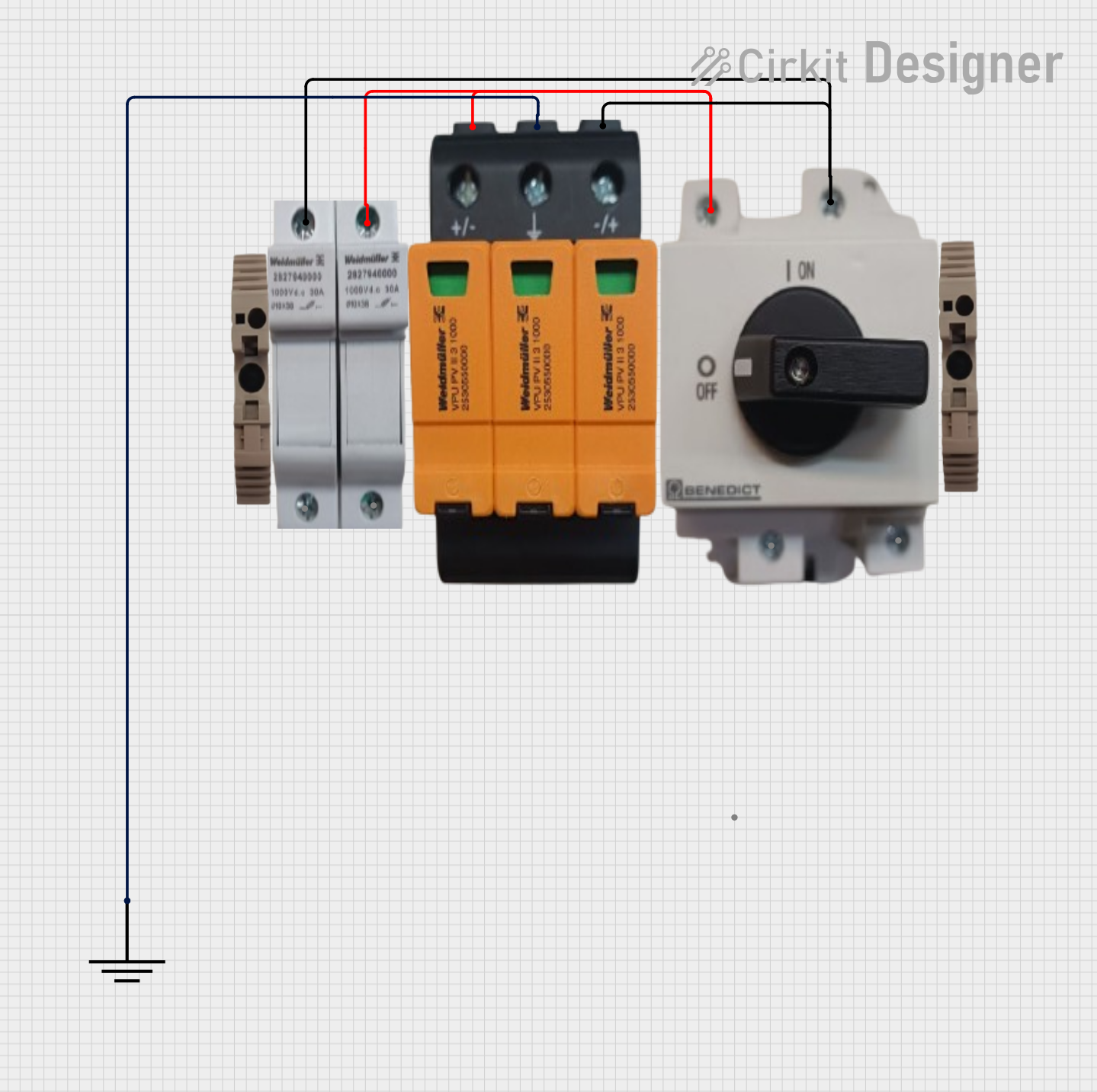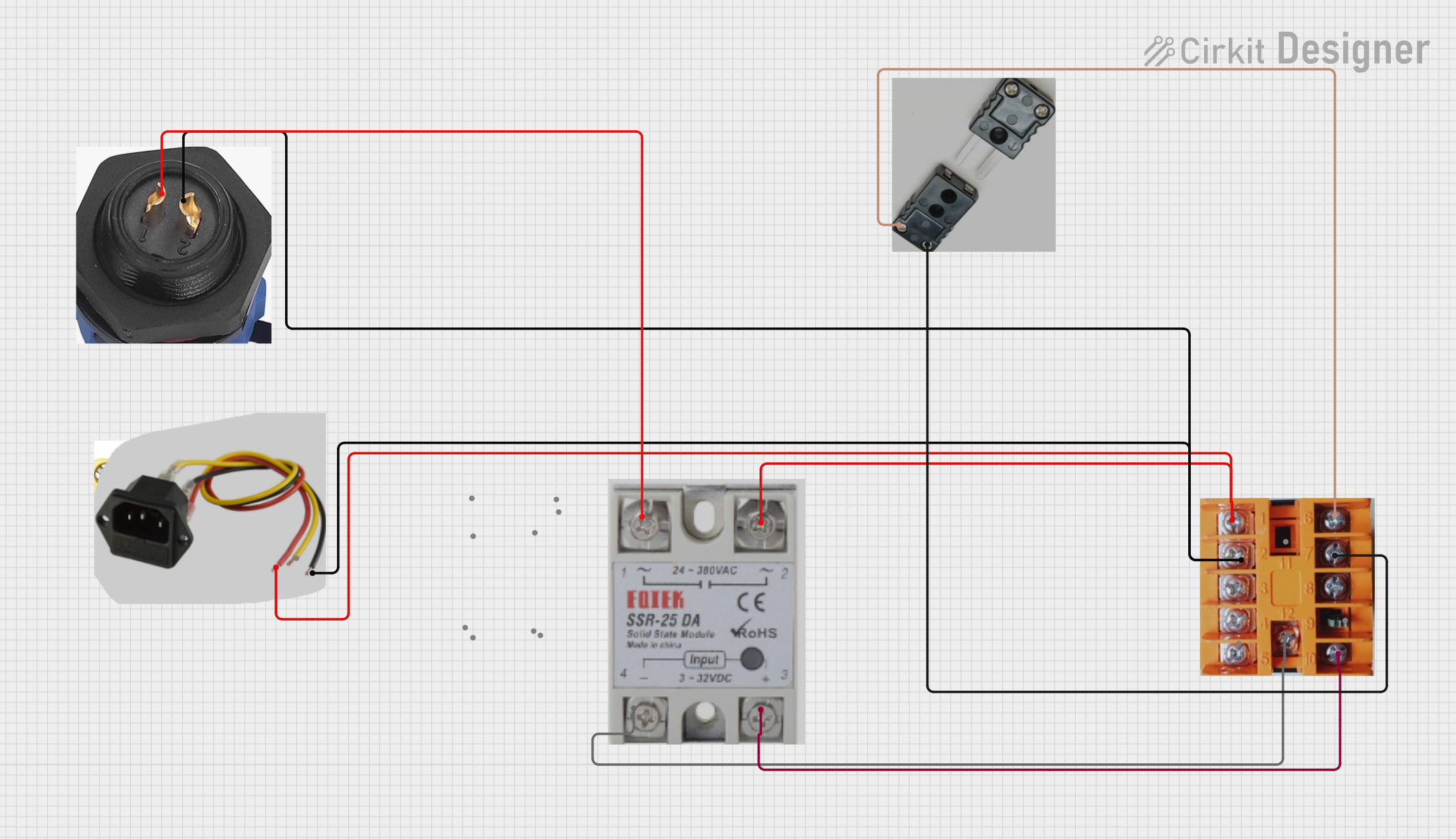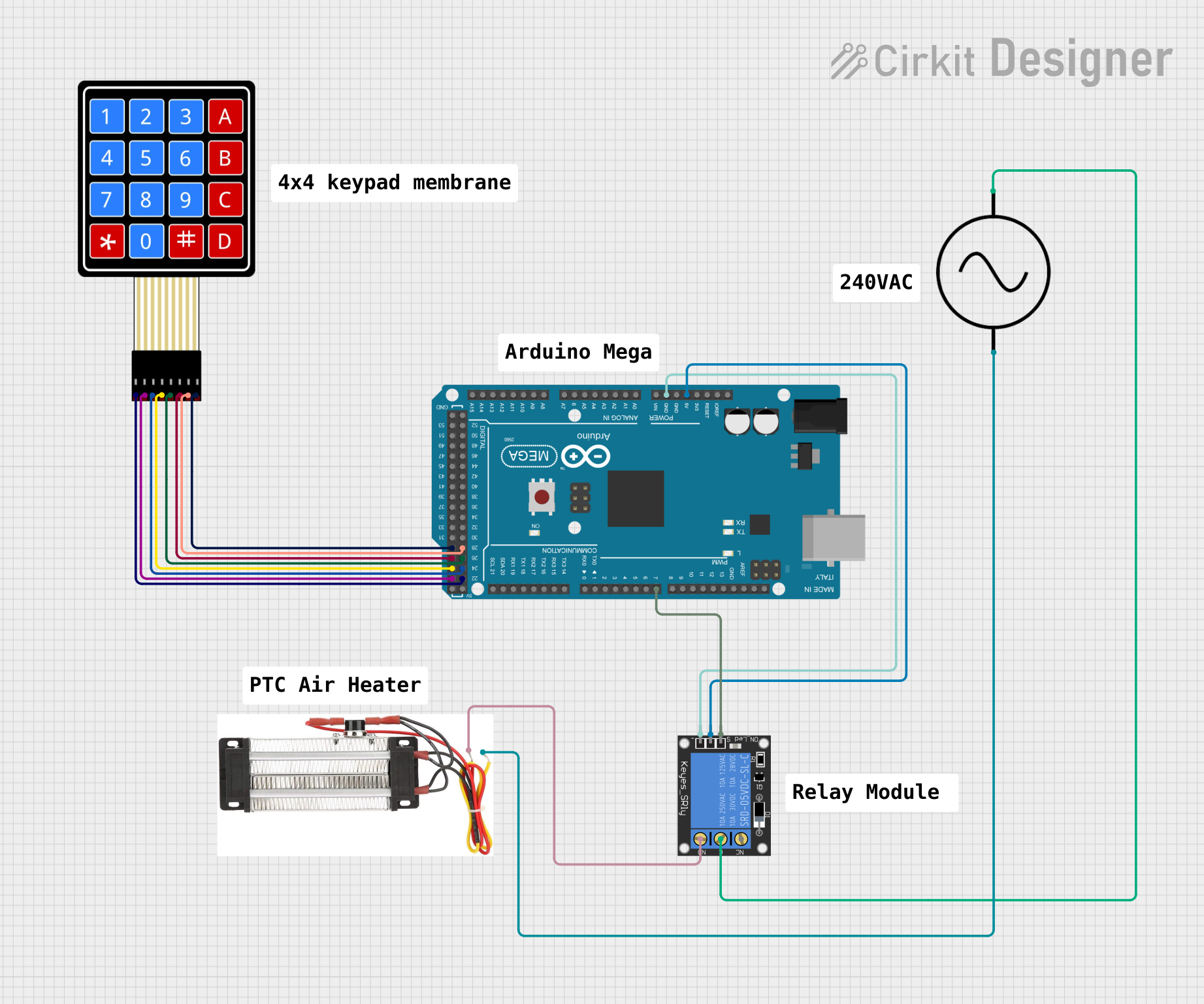
How to Use Resettable Fuse PTC: Examples, Pinouts, and Specs

 Design with Resettable Fuse PTC in Cirkit Designer
Design with Resettable Fuse PTC in Cirkit DesignerIntroduction
A Resettable Fuse PTC (Polymeric Positive Temperature Coefficient) is a passive electronic component that serves as a self-resetting overcurrent protection device. Unlike traditional fuses, which must be replaced after a single use, a Resettable Fuse PTC can return to its low-resistance state after the overcurrent condition has been removed, allowing it to protect circuits repeatedly. These components are widely used in various applications, including consumer electronics, automotive, battery packs, and power supplies, to prevent damage from overcurrent and short-circuit conditions.
Explore Projects Built with Resettable Fuse PTC

 Open Project in Cirkit Designer
Open Project in Cirkit Designer
 Open Project in Cirkit Designer
Open Project in Cirkit Designer
 Open Project in Cirkit Designer
Open Project in Cirkit Designer
 Open Project in Cirkit Designer
Open Project in Cirkit DesignerExplore Projects Built with Resettable Fuse PTC

 Open Project in Cirkit Designer
Open Project in Cirkit Designer
 Open Project in Cirkit Designer
Open Project in Cirkit Designer
 Open Project in Cirkit Designer
Open Project in Cirkit Designer
 Open Project in Cirkit Designer
Open Project in Cirkit DesignerTechnical Specifications
Key Technical Details
- Initial Resistance: Specified in ohms at room temperature before tripping.
- Trip Current: The current at which the device will transition from a low-resistance to a high-resistance state.
- Hold Current: The maximum current the device can carry without tripping in its initial state.
- Maximum Voltage: The maximum voltage the device can withstand without damage.
- Time to Trip: The time it takes for the device to trip at a specified current.
- Power Rating: The maximum power the device can dissipate when in the tripped state.
Pin Configuration and Descriptions
| Pin Number | Description |
|---|---|
| 1 | Current Input |
| 2 | Current Output |
Note: Resettable Fuse PTCs are typically two-terminal devices, and the pin configuration may vary based on the package type.
Usage Instructions
How to Use the Component in a Circuit
- Identify the Correct Rating: Choose a Resettable Fuse PTC with appropriate current and voltage ratings for your application.
- Circuit Placement: Connect the Resettable Fuse PTC in series with the load that requires protection.
- Orientation: As a two-terminal device, the Resettable Fuse PTC does not have polarity, so orientation is not a concern.
- Testing: After installation, test the circuit to ensure the Resettable Fuse PTC trips and resets as expected under overcurrent conditions.
Important Considerations and Best Practices
- Selecting Ratings: Ensure the hold current is above the normal operating current and the trip current is below the maximum current the circuit can handle without damage.
- Ambient Temperature: Be aware that ambient temperature can affect the trip and hold currents.
- Ventilation: Provide adequate ventilation as the Resettable Fuse PTC can heat up during and after tripping.
- Recovery Time: Allow time for the device to cool down and reset after an overcurrent event.
Troubleshooting and FAQs
Common Issues
- PTC Does Not Reset: Ensure the overcurrent condition has been removed and the device has had time to cool.
- Nuisance Tripping: If the PTC trips during normal operation, verify that the hold current rating is appropriate for the circuit.
Solutions and Tips for Troubleshooting
- Check Circuit Load: Confirm that the load does not exceed the hold current of the PTC under normal conditions.
- Inspect for Damage: If the PTC has been exposed to a severe overcurrent event, it may be damaged and require replacement.
- Ambient Conditions: Ensure the operating environment is within the specified temperature range for the PTC.
FAQs
Q: Can a Resettable Fuse PTC be used multiple times? A: Yes, it is designed to reset itself after an overcurrent event once the condition is cleared.
Q: How quickly does a Resettable Fuse PTC respond to overcurrent? A: The response time, or time to trip, varies by model and is specified in the datasheet.
Q: What happens if the PTC is subjected to an overcurrent beyond its maximum voltage rating? A: Exceeding the maximum voltage rating can permanently damage the PTC, rendering it non-functional.
Example Code for Arduino UNO
// Example code to demonstrate the use of a Resettable Fuse PTC with an Arduino UNO
// The PTC is used to protect a simple LED circuit from overcurrent
const int ledPin = 13; // LED connected to digital pin 13
void setup() {
pinMode(ledPin, OUTPUT); // Set the LED pin as output
}
void loop() {
digitalWrite(ledPin, HIGH); // Turn the LED on
delay(1000); // Wait for 1 second
digitalWrite(ledPin, LOW); // Turn the LED off
delay(1000); // Wait for 1 second
}
// Note: The Resettable Fuse PTC should be connected in series with the LED.
// If an overcurrent occurs, the PTC will trip, protecting the LED from damage.
// Once the overcurrent condition is removed, the PTC will reset, allowing
// normal operation to resume.
Note: The above code is a simple blink sketch and does not directly interact with the PTC. The PTC's functionality is independent of the microcontroller and is based on the current flowing through it.